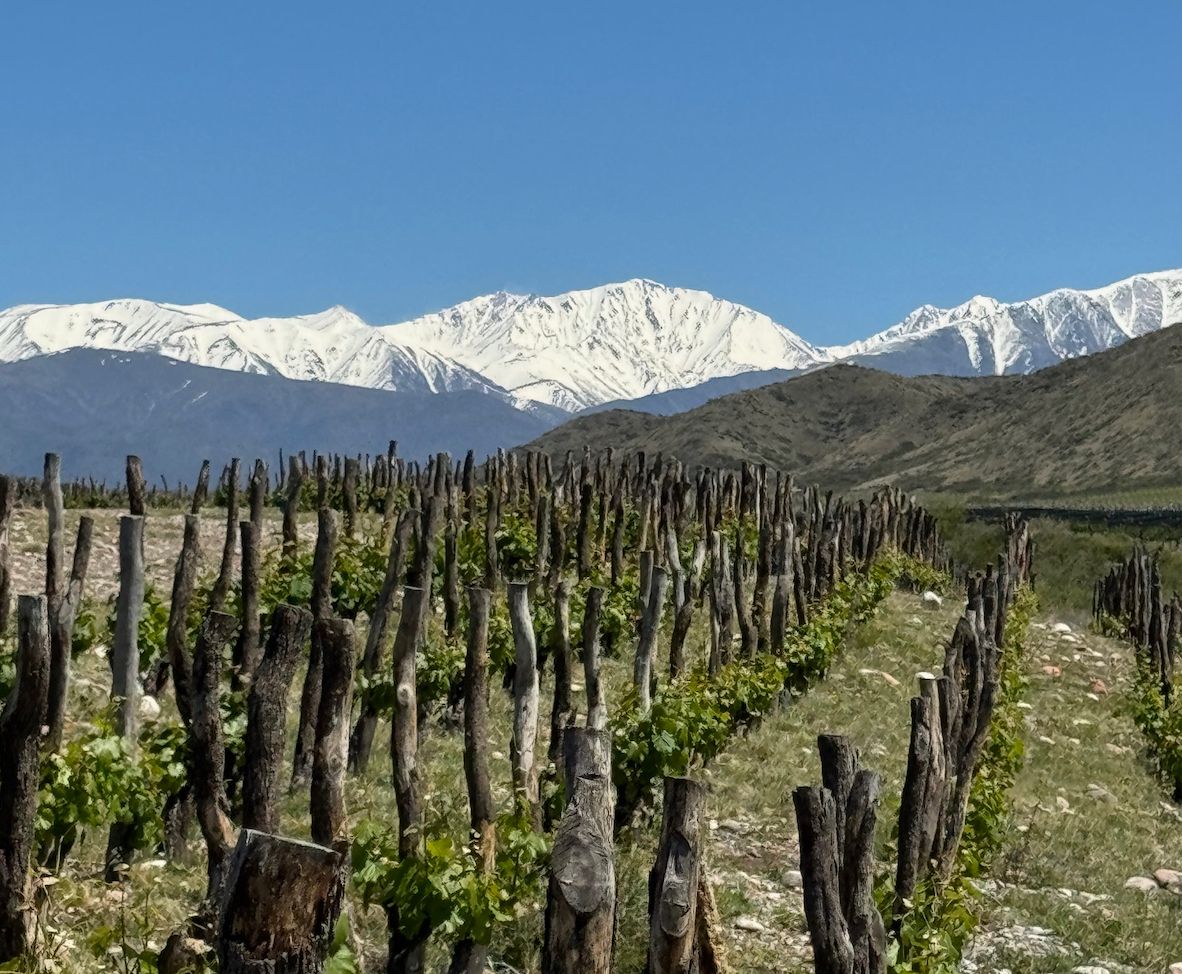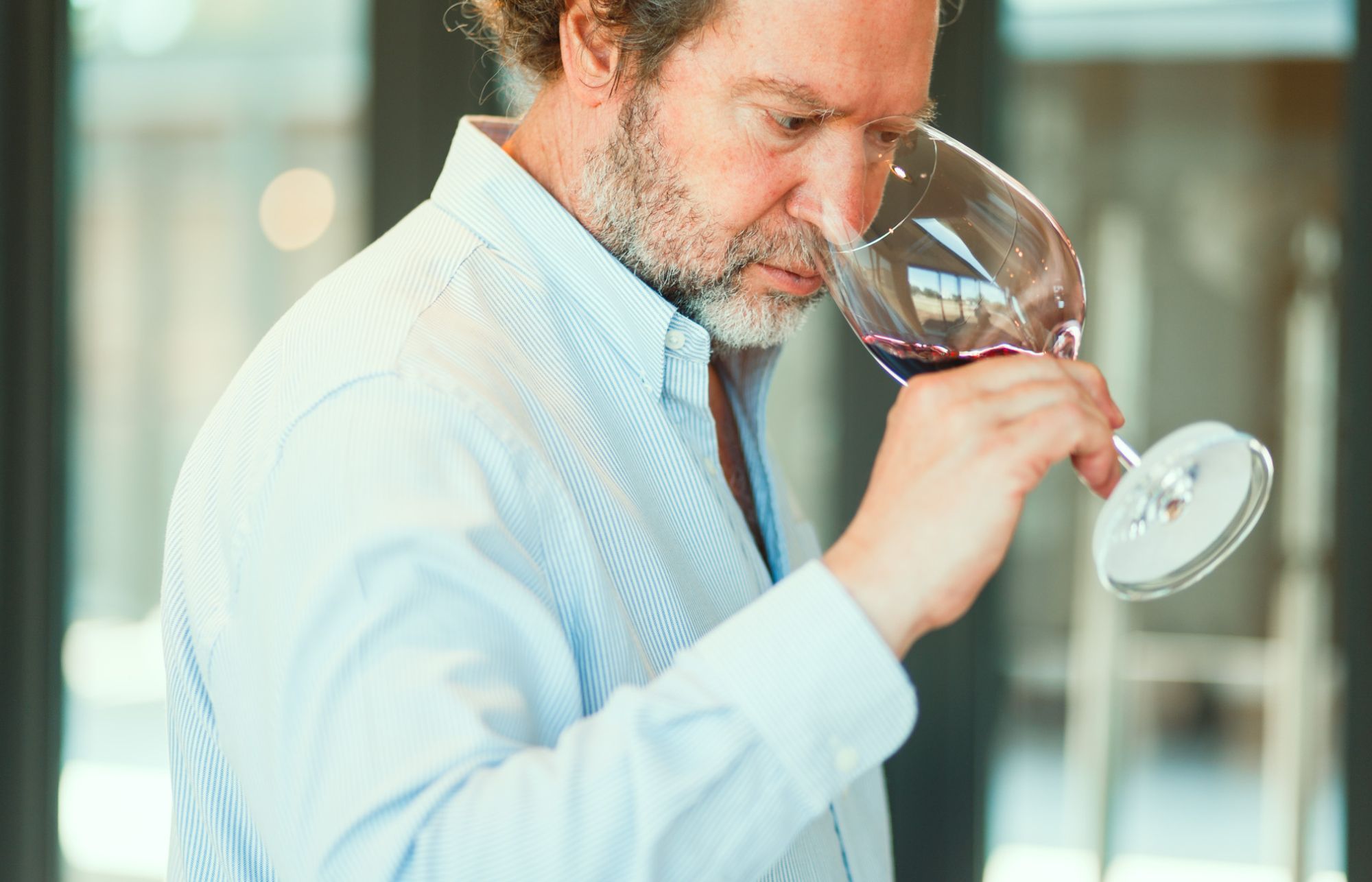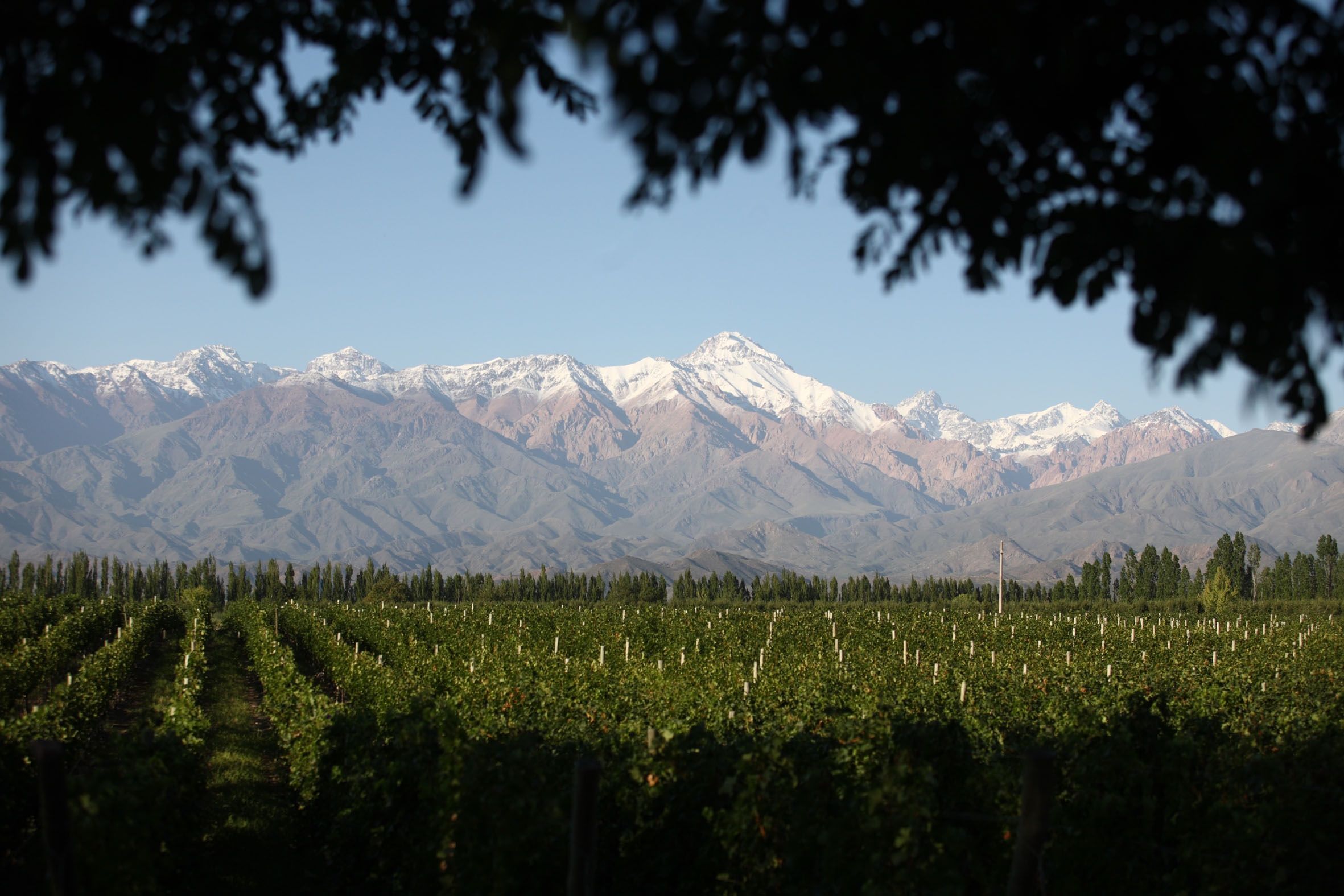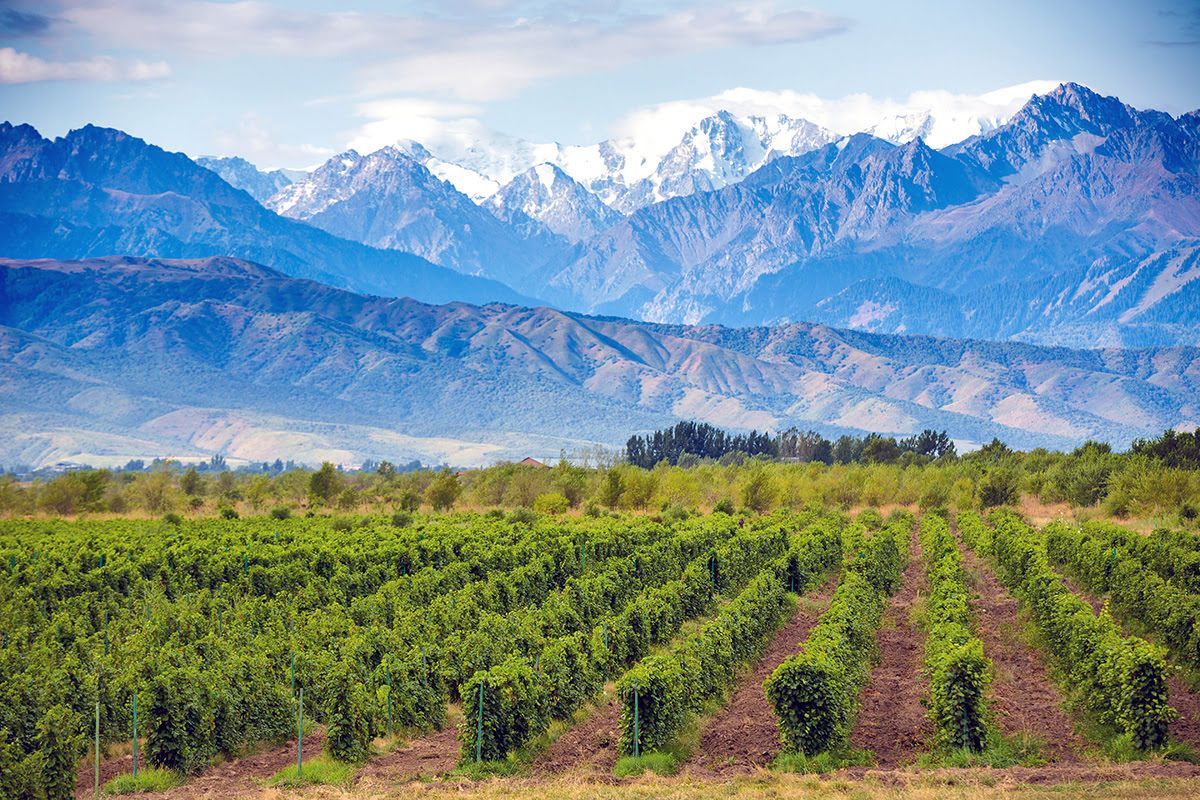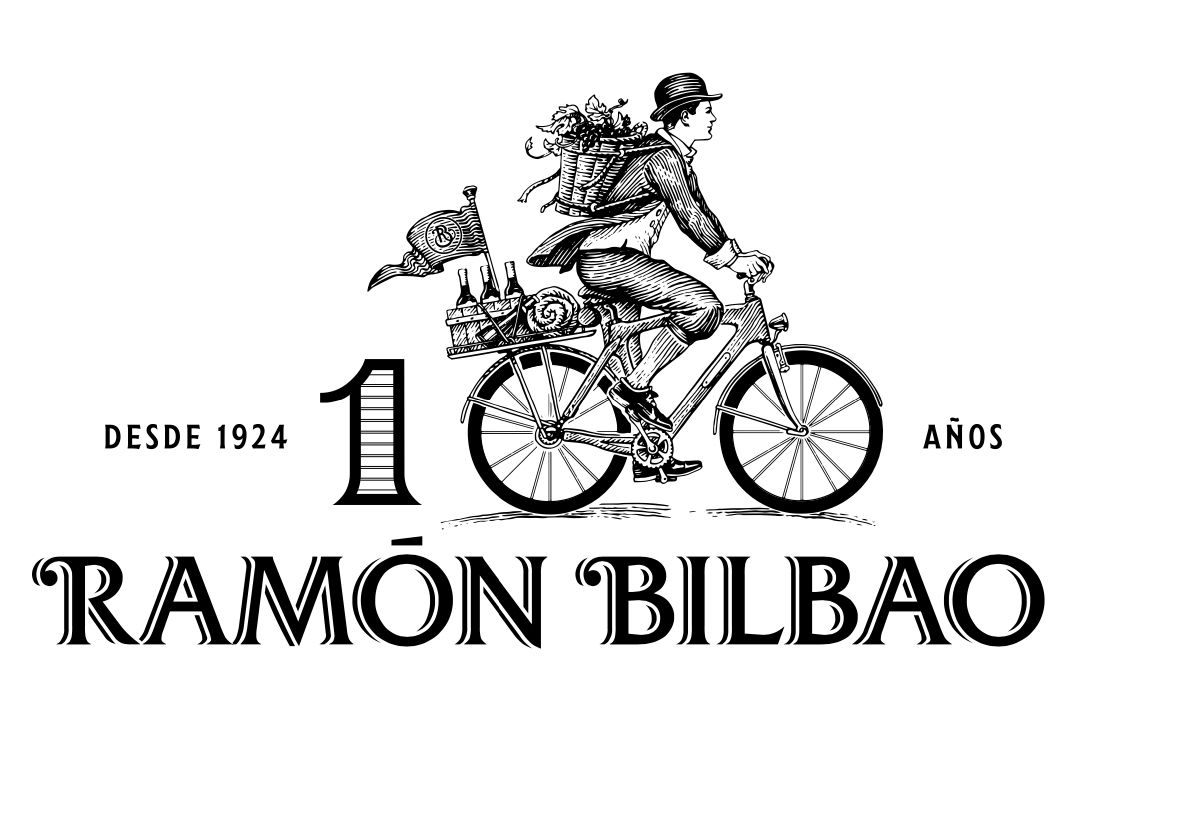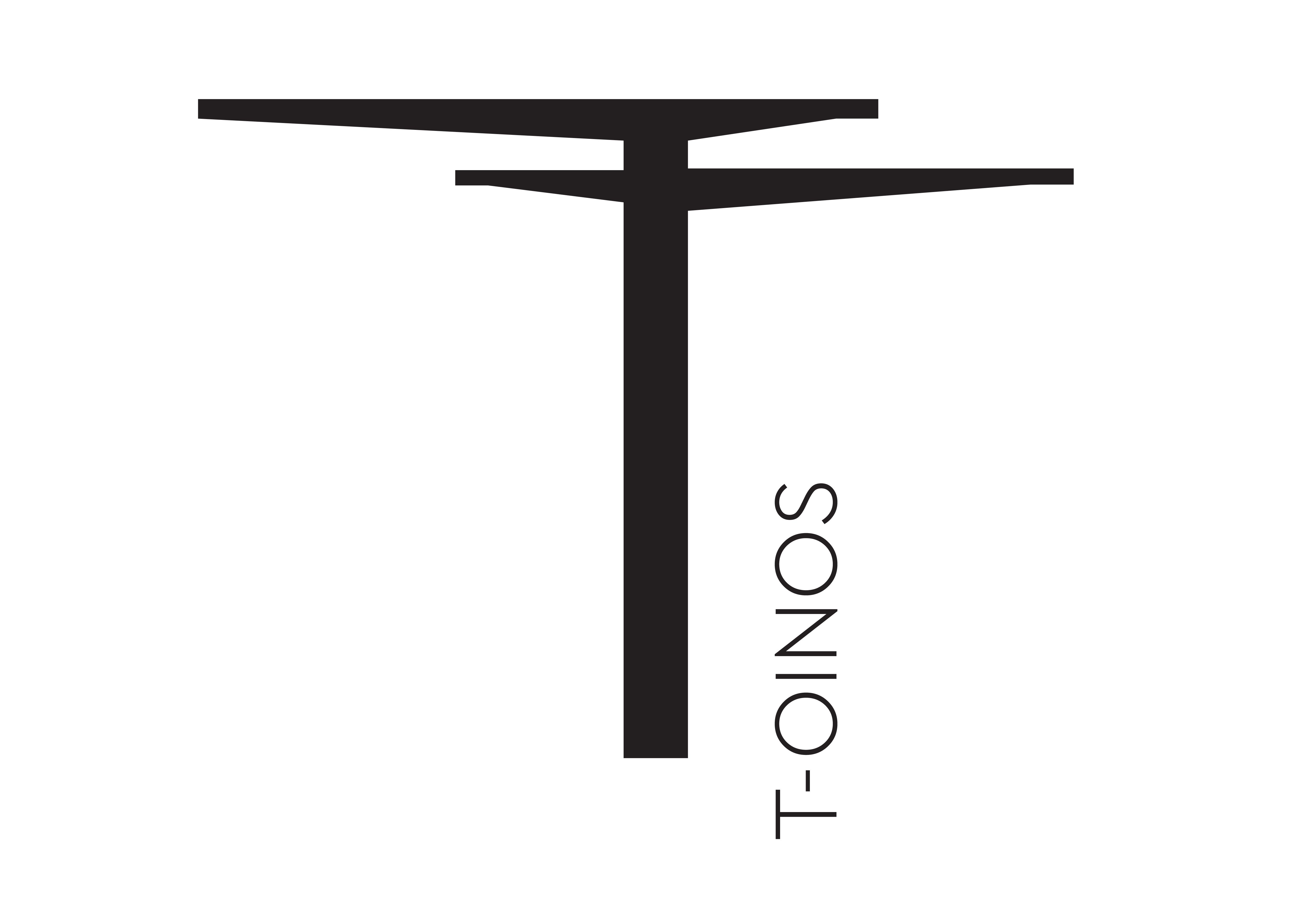I have been lucky enough to go to my fair share of vineyards in my time, but never have I spent quite so much time, literally, up to my neck in them. But make a visit to any of the pioneering producers that are breaking new ground in different sub zones of the Uco Valley and you will find yourself invited to clamber down into what looks like the vineyard equivalent of a grave.
For the modern Argentine winemaker, it is the best way to show just how important not only the soils are in the wines they make, but the different layers and seams of rock, stone and pebbles that are constantly changing the deeper down you go. If that means getting down, deep and dirty in the rocks and soils then so be it.
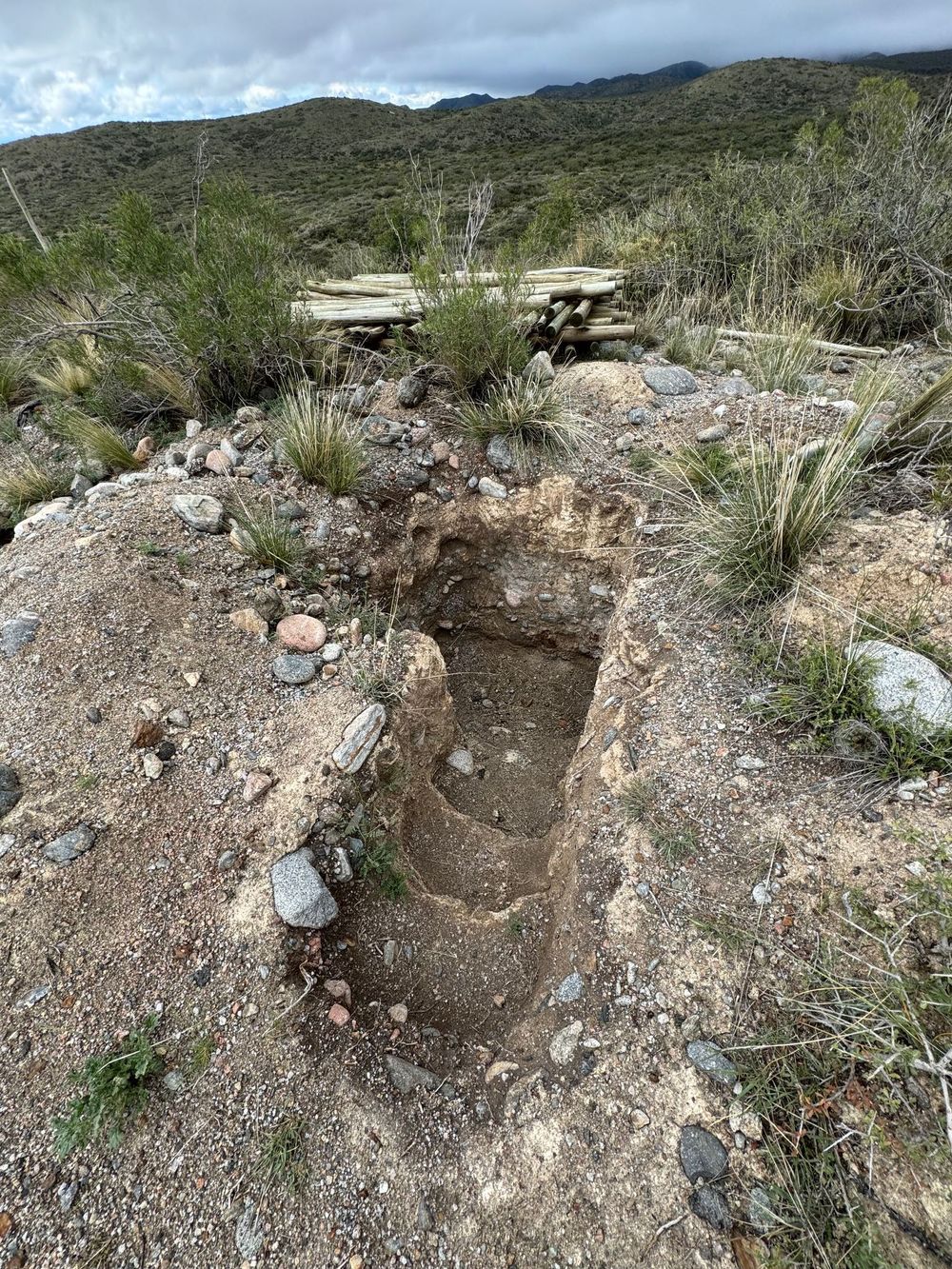
If you travel to Argetnina's Uco Valley then expect to find yourself clambering down into many a vineyard pit in order to be able to see the huge diffrences in the rocks and soils that dictate where specific vines are being planted
This is not just terroir. This is Argentine terroir where the study of rocks and the impact different types of rock and stone can have is now a fundamentally important part of the new Argentine winemaking scene.
It’s why some of the brightest and most sought-after talent in Argentina are not just the winemakers, but also the agronomist engineers who are increasingly central stage helping to direct and dictate where vines should be planted based on how they are likely to behave and what needs to be done to protect them and ensure they produce the best quality grapes possible.
“There’s been a revolution in Argentina in the last 15 years. It’s been like a century’s worth of work. We are in a different universe to how we were planting and treating vines 15-20 years ago,” is how Martin Di Stefano, chief viticulturist at Zuccardi describes the enormous changes that are transforming the Argentine wine industry.
A “revolution” that is turning viticulture, he argues, on its head. “The time of planting geometrically perfect vineyards is over. We are now into the era of ‘contemplative viticulture’ where nature sets the rules,” he adds.
Mountain influence
Which brings us back to the Andes. They don’t just look good; they are having an enormous influence on the styles of wines now being made in Argentina. For the first generations of Argentine winemakers the influence of the Andes lay more in the impact they have on the climate, the big changes in day and night temperatures, and the intensity of the sun at such high altitudes.
For the new generation of winemaker, the Andes’ influence goes even further, dominated by the huge diversity of types of rock and stone that have been brought down by mountain streams to its foothills and valleys below - and it is in and amongst those foothills where Argentine producers now want to be.
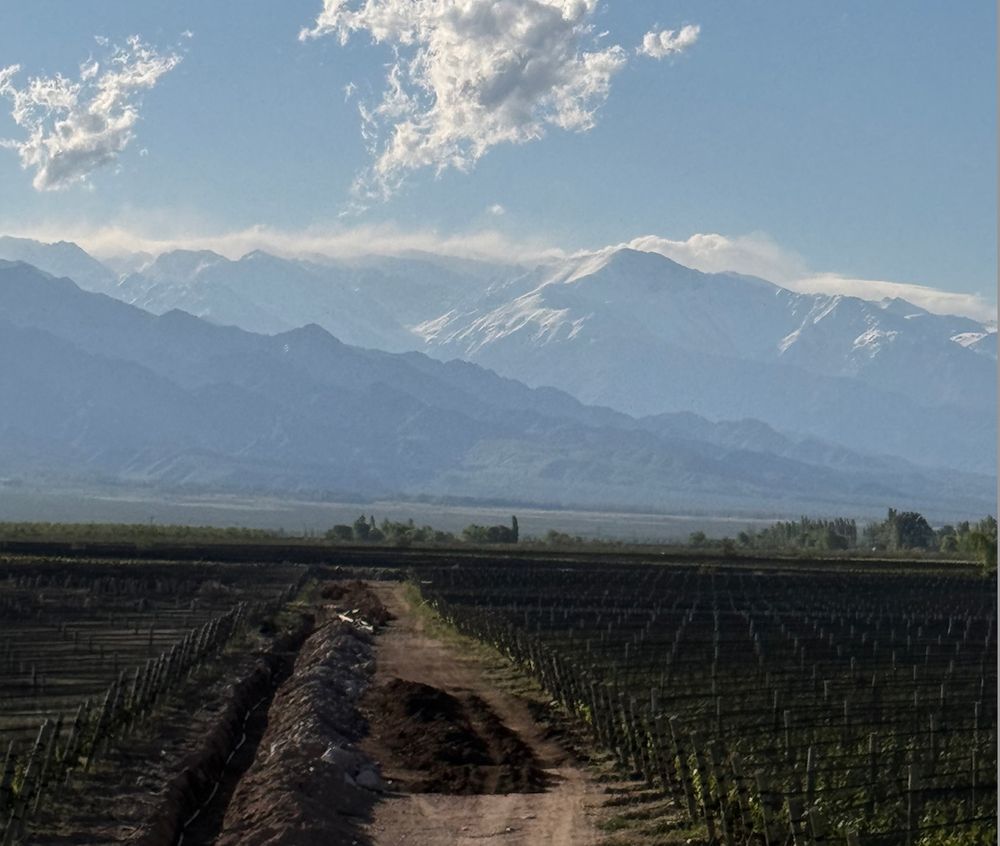
The view from Zuccardi's main winery in the Uco Valley up into the Andes
“Everything we have, we owe to the mountains,” says Di Stefano. “We can describe Argentina in two words. Mountain wine. For many years we used to think altitude itself was the key to making wine here. But it is much more than just altitude. It is the mountains themselves and the impact they are having,” he adds, particularly as the Uco Valley is closest to the highest part of the Andes.
This has seen the emergence of new set of mountainside sub-zones, split between the highest parts Tupungato, Tunuyán and San Carlos high up in the Uco Valley that are attracting the brightest and most ambitious producers and the most talented winemakers and agronomists.
Producers are governed by four factors when deciding where to plant their vines, claims Di Stefano: altitude; soil type; soil slope and distance to the Andes. All of which will have a big impact on your average day and night temperatures.
“As cold air descends fast down from the mountain and then sits at the bottom of the valley, it means that vines at altitude in Tupungato and closer to the mountain are actually cooler with what can be a 2 to 4C difference in the temperature at the bottom of the valley in San Carlos,” he adds.
Salentein, for example, is looking to take vineyard plantings in the Uco Valley up to 1,700m, with vines dotted across the lower slopes of the Andes in the fast-emerging GI region of San Pablo. This is winemaking 4x4-style where you need a jeep or a Land Rover to snake your way up the mountainside picking out new vine plantings along the way.
“Winemakers have seen the enormous potential there is in San Pablo to make truly great wines with elegance and texture of tannins than you can’t get in other parts of the Uco Valley,” says chief winemaker José Galante also regarded as the “Godfather” of Argentine winemaking thanks to his 30 plus years making wine for the Catena’s way back to the Mondavi and Paul Hobbs days.
Being inspired
It’s where I spent the bulk of a recent excellent and inspiring trip to Argentina, organised by Argentine wine consultant, Sophie Jump with the chance to spend quality, detailed time with a handful of some of its most influential and groundbreaking producers each with similar, but different stories to tell. How about this for a roll call of talent? Chakana; Catena Zapata; Bemberg; Argento and Otronia; Salentein, Zuccardi and Finca Decero.
What they each share is a passion to keep looking and searching at ways to make better wines that are as close as possible to the nature and land where they come from.
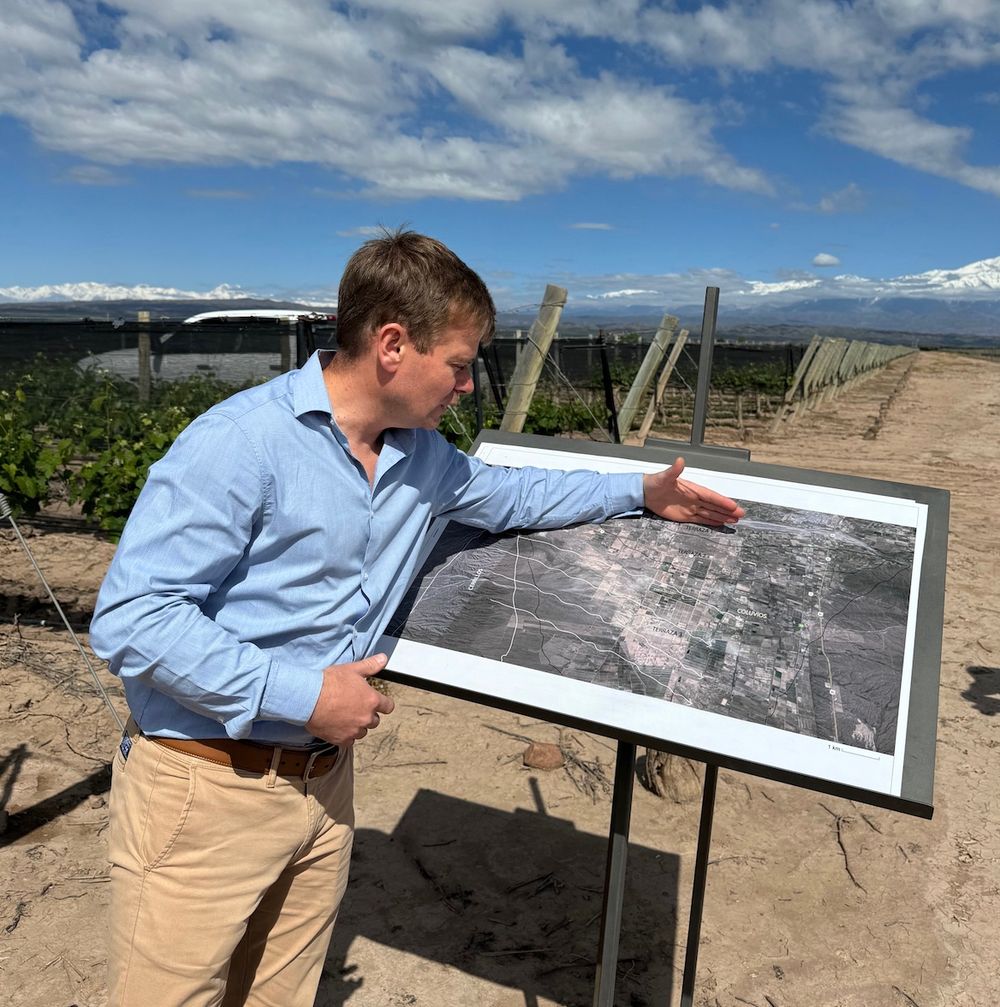
Finca Decero's winemaker Tomas Hughes showing the level of detail it goes into to determine where to plant its vines
Our visits started at Finca Decero, a winery that literally translates as starting from zero, that first started making wine in the mid 2000s. A producer whose philosophy is all about looking to the future rather than be distracted by what has happened in the past.
“It’s a mindset,” says winemaker Tomas Hughes. “We don’t want to be held back by the past and what has happened before. We do not want to compromise what we are doing.”
Its focus is clear and simple. To build a premium wine brand, of around 65,000 cases a year, using only its own grapes, grown in the Argelo sub-region of the Uco Valley at around 1,050m.
Finca Decero is prepared to keep its wines back, for a number of years if need be, and also to hold on to a few hundred bottles to see how they mature and what potential market there might be for them down the line.
“It’s not about selling volume and lots of cases of wine,” stresses Martin Marchesini, head of sales and marketing, who is currently looking for a partner in the UK. “We want to be in the best on-trade accounts and have premium distribution with specialists and independent wine merchants.”
Huge change
It feels like a long time since my first to the country in 2010 where the biggest influences felt like they came from outside, be it the desire to follow European and Old-World winemaking methods, or to be able to hit all the big supermarket commercial price points with their full on, alcoholic, fruity, juicy wines. When every producer had a ubiquitous Malbec and Torrontés they wanted to show you.
Six years later and during my next trip in 2016 the focus had started to switch to the vineyards, and, in particular, ways to calm climate change through canopy management, ripening techniques, growing vines at cooler, higher altitudes and using different formats such as concrete eggs and foudres to tame and bring the wines down a notch or two. But again, Malbec and Torrontés were the two big stars of the show.
Now the focus lies below the ground and fully understanding the place where the vines are being grown and which varieties work best where - long before we actually start to talk about how they are made. A list of varieties that now stretches right across the international spectrum with particular focus and success for Cabernet Franc, Pinot Noir, Riesling, Chardonnay, Sauvignon Blanc and, of course, Malbec.

José Zuccardi says the key difference for him in Argentina's wines is the freshness and purtiy of fruit that winemakers can now get thanks to their knowledge of the soils and rocks beneath the vines
It’s why, for example, Zuccardi is planting multiple parcels of vines hectare by hectare at its new vineyard sites in Gualtallary and San Pablo at 1,400-1,500m in the foothills of the Andes. Here the focus is on selecting numerous varietals depending on the rock formations and soil types in a particular hectare. These might then need to be picked weeks apart during harvest time due to the different soil and rock conditions.
“Each parcel can be vinified separately in the winery for ultimate freshness, tension, vibrancy, purity of fruit based on the place where they came from,” explains José Zuccardi over dinner at Zuccardi’s spectacular Bond-style winery in Altamira.
A level of detail that Di Stefano claims is the “most unique and groundbreaking winemaking in the world”. Where the focus is on having “happy vines” using natural grasses, herbs and composts to ease water use and retention.
The Zuccardis only used composited soils, rocks, stones, and other natural materials of the surrounding Uco Valley when it built its new winery - Zuccardi Valle de Uco - in 2016.
Scientific analysis
The scale and ambition of premium winemaking in Argentina certainly needs to be seen to believed. Where intensive scientific analysis of soils and vines are taking its wines to whole new levels of quality and what can only be worldwide recognition.
Catena Zapata even has its own dedicated Catena Institute of Wine to help it make even better wines for now and future generations. Or as Fernando Buscema, executive director of the Institute, puts it: “The Institute was set up to help Catena make wines that can match the best wines in the world.”
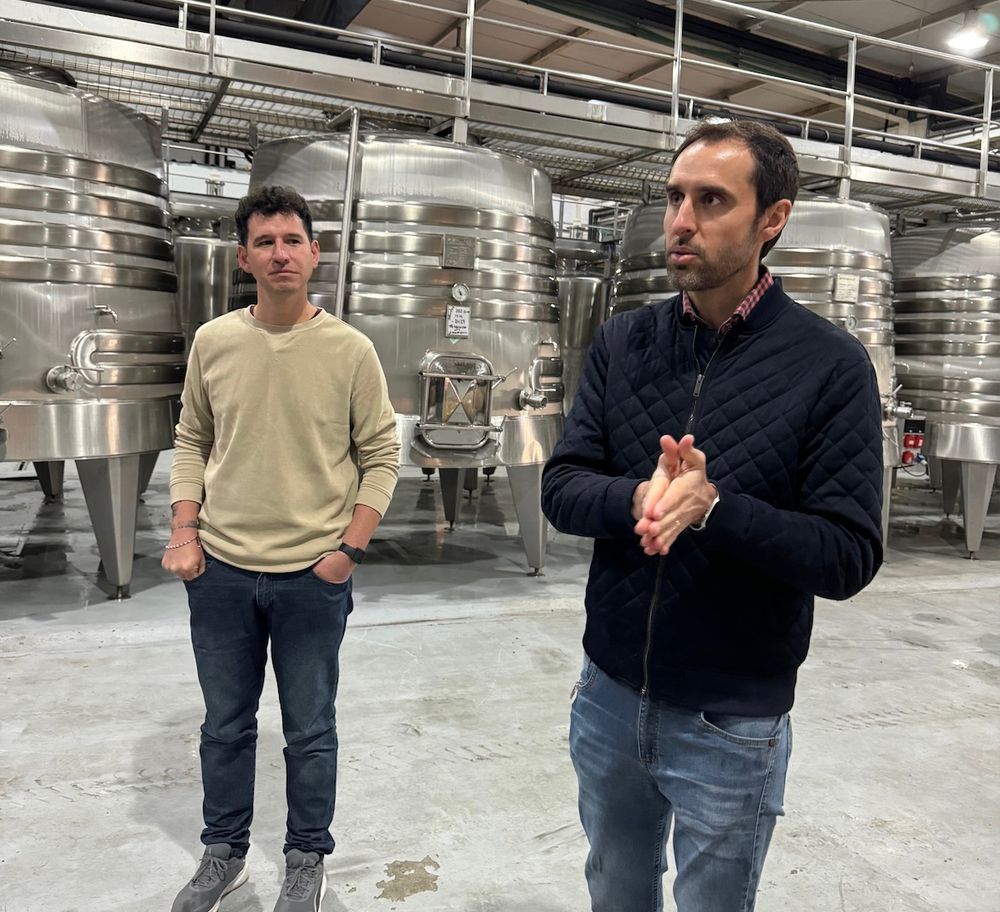
Fernando Buscema, Catena Insitute of Wine's executive director, right, and Roy Urvieta Catena's enology specialist
It is able to link up with scientists and specialists Buscema describes as “Indiana Jones” experts working in agriculture-related research centres around the world, and use their combined research to help Catena and the wider Argentine wine industry to plant vines and make wines in the most terroir-driven and sustainable way possible to “preserve the taste of place” in the wines.
“Science can help uncover what is hidden,” he adds. “It can transform knowledge into wine.”
All of which is encapsulated by what Catena is doing at its Adrianna vineyards in the northern east tip of the Uco Valley in Gualtallary at 1,500m. Where the richness and diversity of its soils and rocks means it can make site specific wines to the highest quality - which some critics have described as South America’s Grand Cru wines.
“The same plot of land can make two different styles of wine,” claims Roy Urvieta, Catena’s enology specialist. Which is why it was initially known as the “nightmare vineyard” as it was “so hard to understand the grapes it was producing where one plot of land and its grapes might mature and ripen two to three weeks before an adjacent plot of land at the same latitude.
“All our analysis has now helped us get our heads around it,” he adds.
It now has plantings of Malbec, Chardonnay, Cabernet Sauvignon, Pinot Noir, Viognier and Cabernet Franc across its Adrianna Vineyard with its alluvial, gravelly and limestone soils. The names of its wines illustrate just how important the rocks and soils are - be it in its White Bones Chardonnay, White Stones Chardonnay, River Stones Malbec or Fortuna Terrae Malbec.
Catena was able to work with Argentina’s main research institution, the National Council of Scientific and Technical Research, to co-finance several PhD studies on the effect of sunlight intensity on wine quality and its effect on Malbec vines grown at the Adrianna Vineyard. It continues to work too with the National University of Cuyo and its School of Agronomy to help train the next generation of viticulturists in the country.
It also works closely with the Department of Viticulture and Enology of the University of California, Davis to further study its soils and key varietals.
Catena now hopes, says Buscema, to share the knowledge with other Argentine producers so they can grow and learn together and turn the Uco Valley into one of the best wine regions in the world.
Finca Decero has also gone to extraordinary levels to plant the right vines in the right place. Like analysing its terroir and soils to determine the right level of electrical activity to plant particular vines, all with the intention of making elegant, finessed wines, true to where they come from.
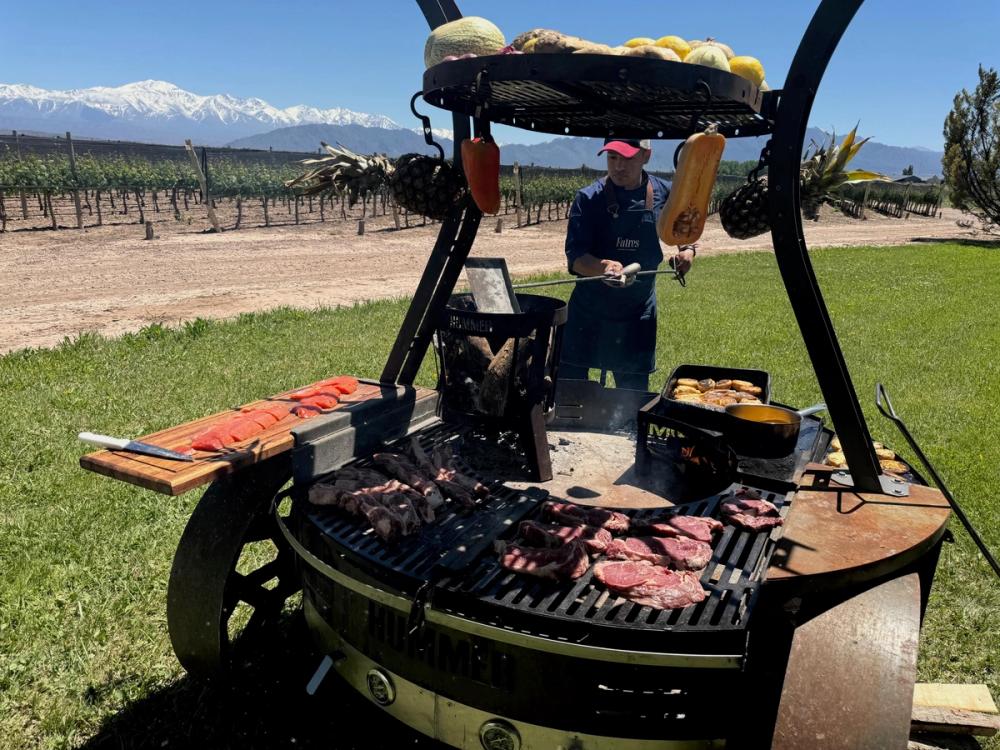
One thing that has not changed in Argentina is their love for food and steaks - here at Finca Decero
New plantings
All this analysis is also opening the door, for the first time, for a wider range of cool climate, “mountain” grape varieties - particularly white wines.
Salentein was one of the first producers to see the potential of the Uco Valley and now has vineyards in five separate GI areas, stretching from 1,100m to 1,700m, giving it grapes made from a variety of soil types and a wide temperature range. It now owns 2,000 hectares across the valley, with 1,000 ha planted. All of which helps it make different quality tiers of wines up the premium price range from its Portillo range through to Killka, its Barrel Selection and up to its luxury Gran Valle de Uco Blend.
“We have specific plots where we are planting different varieties to see how they work at altitude and in different soil types,” explains Salentein’s head agronomist, Diego Morales. “This focus on soils started around 10 years ago so now we have so much information about what wines we can make and where.”
It is particularly excited by the future potential of the San Pablo region of the Uco Valley - which got GI status in 2019 - right up in the foothills of the Andes with a series of vineyards plantings across 400h, including experimental plots of Pinot Noir, Riesling, Pinot Meunier, Chardonnay and others.
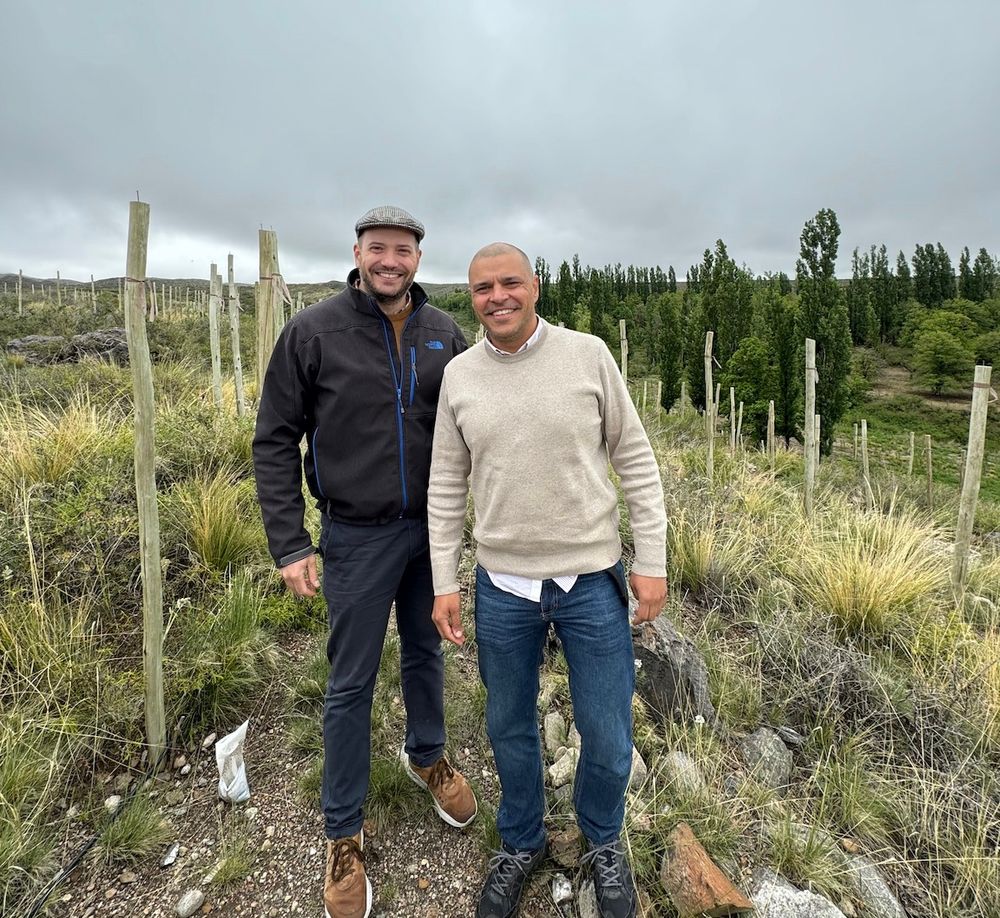
Salentein is planting vines high up on the foothills of the Andes up to around 1700m says agronomist Diego Morales, pictured right.
It wants to see which varieties work best where, with a dedicated Pinot Noir plot at 1,450m and then Pinot Meunier, Pinot Noir and Chardonnay at 1,600m and its highest, a Malbec plot at 1,680m.
“There is so much potential in San Pablo. It is an area from which we can make great wines,” says Galante.
It is even experimenting with a new “teacup” style vinification at its state-of-the-art Uco Valley winery where the grapes are held in an open teacup-designed vessel for up to 10 days to help raise the quality of the wine. It will, though, be up to four years before we see the first harvest and six years before the first wines are made from highest most recently-planted plots in the San Pablo GI.
Gabriela García, head of research and development at Salentein, says it is already “learning so much” from its San Pablo vineyards and plots of vines in how to handle different varieties. But the key is to pick as early as you can in order to maintain the freshness and acidity across both its red and white wines. The quality of Pinot Noir, in particular, can be seen thanks to picking grapes “so much earlier”.
Chakana, one of the largest biodynamic and organic producers in Argentina, is also operating in the Uco Valley with vineyards in Paraje Altamira where it is producing its Ayni wines from vines planted on calcareous virgin soil, rich in gravel and native flora, at about 1,200 meters above sea level. They are helping Chakana produce complex mountain wines aged in German oak barrels. It is also producing a sparkling white wine under the Ayni label from Paraje Altamira.
Planting by analysis
Nothing takes place in the Uco Valley without meticulous research and planning, says Daniel Pi, head winemaker at the Bemberg Wine Estate. The former head of wine at Grupo Peñaflor was the ideal candidate to take on the winemaking operation for the Bemberg family, famous for bringing the Quilmes beer brand to Argentina and the world, when it took over Penaflor’s wine business in 2010 to become Argentina’s largest privately-owned wine company, managing 3,500 hectares and nearly 3,000 employees.
“I was able to tell them where the best grapes were and which regions had the best potential,” he says.
Which is why Bemberg’s own wine estate has been set up in Gualtallary high up in the Uco Valley, a site that has been cherry picked in order to make the best possible wine in the valley thanks to the painstaking analysis of the site, its soils and what vines will work where, down to how many vines should be planted in any particular plot of land.
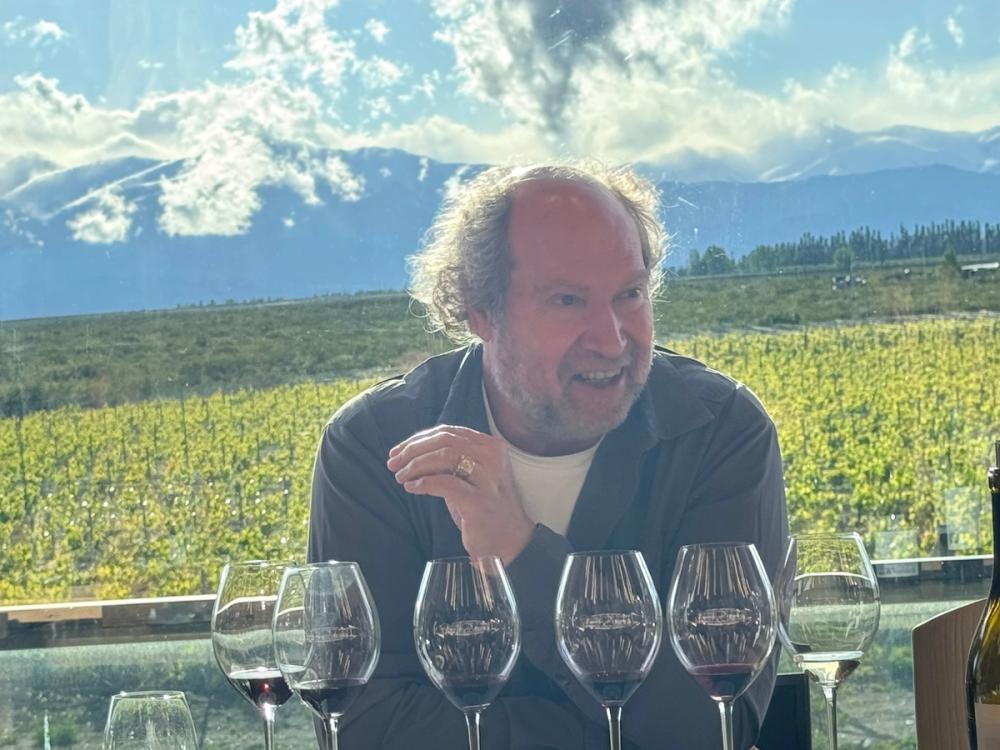
Daniel Pi says he has been able to build the winery of his dreams at Bemberg Estate
Pi says the focus in the vineyards has developed from canopy management and leaf production to look deeper and more analytically at the soils. “We are now looking at the balance between the vine and the soil, down to the impact of one single vine.”
It means it now knows how many kilograms of grapes it can expect to get off a vine in any particular area of its vineyard - for example 2.7kg of grapes on one vine might produce 2.3 bottles of wine.
“We do the same analysis per hectare of vine,” says Pi. “I want to get to a target of one bottle of wine per vine.”
Pi says he feels extremely lucky to have been given the freedom to build the winery of “his dreams” in the Uco Valley with all the “elements” you need to make the most possible wine, even down to “refining the air” in the winery to ensure it has “tank purity”. The chance, he adds, to “build your own history”.
Transformed viticulture
The Zuccardis have also been planting a number of white varieties at its new high altitude sites in Gualtallary (1,200m-1,500m), San Pablo (1,150-1,450m) and Parade Altamira (1,050m-1,150m) including Verdejo, Semillon, Chardonnay, Sauvignon Blanc, Albariño and Riesling at its San Pablo site.
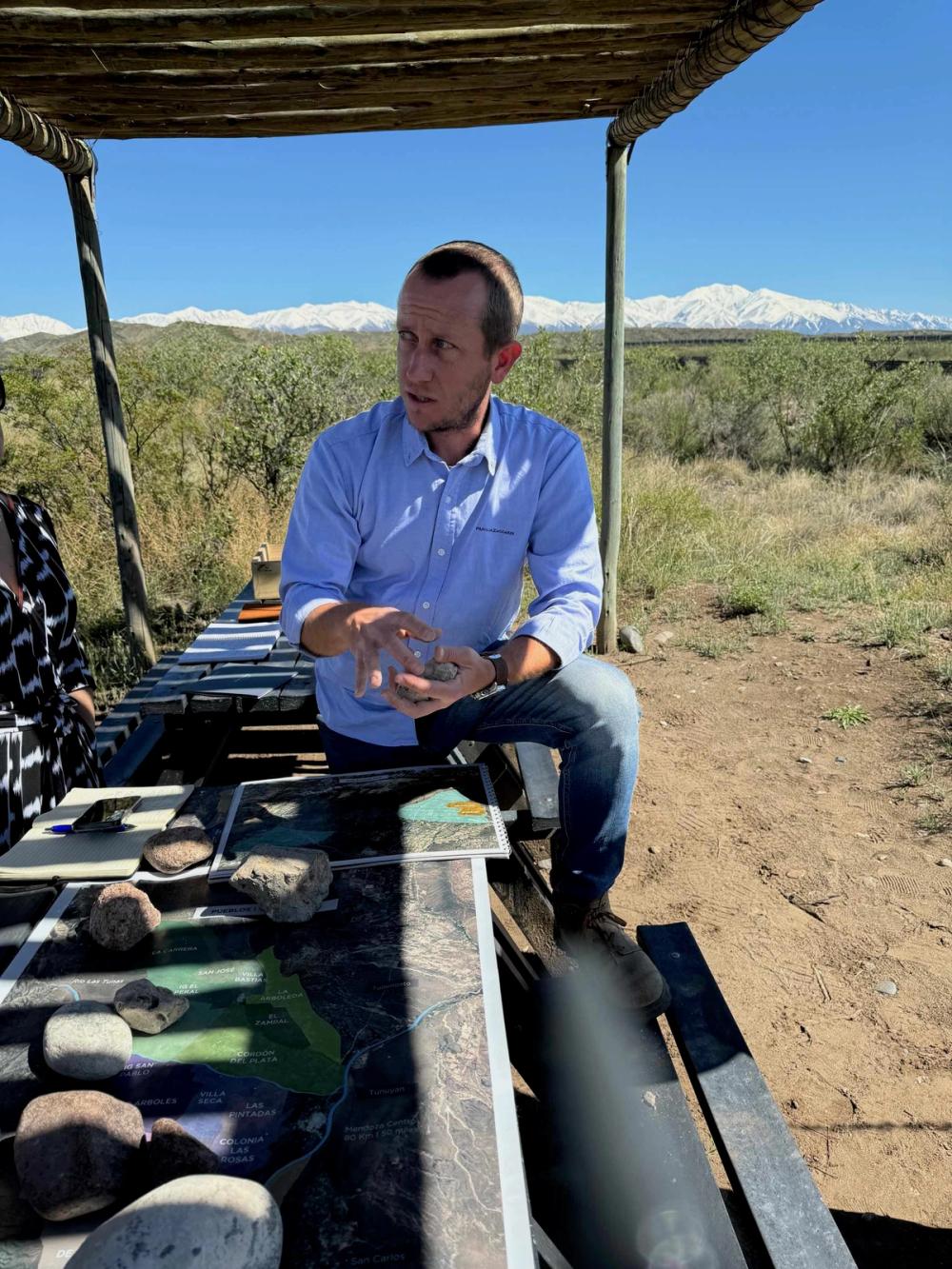
Martin Di Stefano chief viticulturist at Zuccardi was able to bring the rocks and stones alive with his inspiring talk about the work being done by producers to work with nature up in the Uco Valley
“It is the rich alluvial soils that we are looking for,” says Di Stefano. “Soils that are made from the rolling stones and water coming down from the Andes. It is the natural water in these soils that make them so important to winemakers moving into the area,” he adds. Each area of soil has its own “soil DNA” that makes it unique.
He admits that when producers, such as the Zuccardis, first moved to the Uco Valley 15 years ago they did not realise quite what potential the soils and the rocks had.
“But the deeper we went, the more diversity and complexity we found. We now need to be experts in every part of the region so we can design the right viticulture for it,” adds Di Stefano.
It’s why producers have completely changed the way they now plant vines. In the past you bought some land, moved in, and flattened the land in order for the vines to grow. Now they realise they are “destroying the natural ecosystem that has been there for tens of thousands of years” by doing that. “Now, everything is done in harmony and in tune with the area they are in,” stresses Di Stefano.
“We realised how we were planting, picking and making wines was all wrong,” he adds.
Thanks to over 10 years of detailed analysis of the soils and the environment, producers are now vinifying and planting vines on a vine by vine, row by row basis based on the soils and rocks they are in.
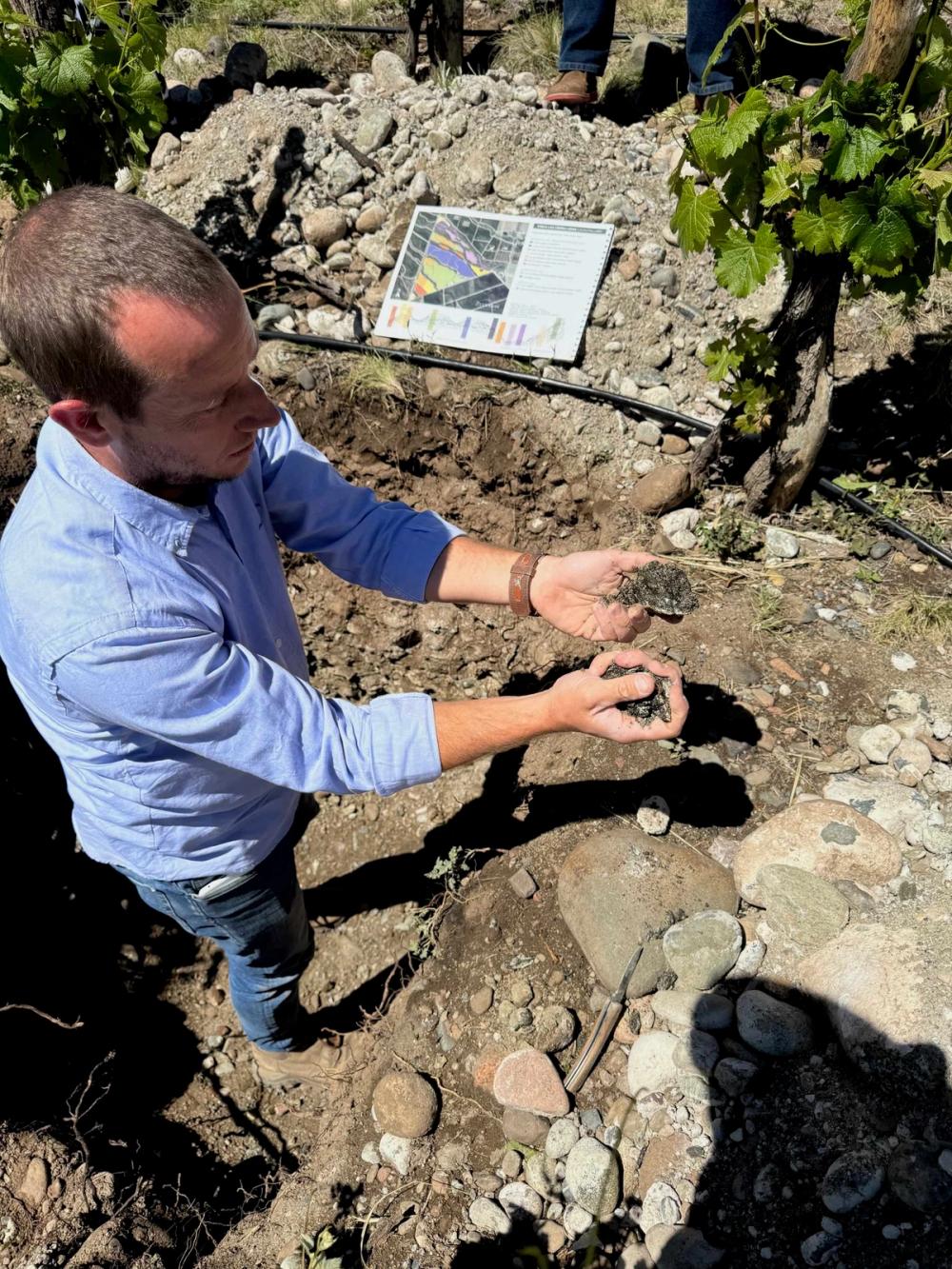
"Wine is now being made based on soils, rocks and terroir and not on the geometrical layout of a traditional vineyard" says Martin Di Stefano
He explains: “Wine is now being made based on soils, rocks and terroir and not on the geometrical layout of a traditional vineyard. It has taken us a long time to do that, but it can only help us make better wines and is honest to the place where it comes from. We want to have happy vines which can grow vigorously, have big natural leaves and canopies, that can protect ripeness and acidity and are full of energy.”
Which is a long way from having “stressed vines, with low acidity that are high in alcohol”.
Maps of vineyards now look like some sort of colour map with each colour representing the soil and rock make up of that particular area of the site. When blends and wines are put together, winemakers are using those colour maps to determine which “colours” will work best in the final wine.
It has allowed the Zuccardis to break down its ranges into wines made from specific sub-zones, like its regional and village wine ranges and then for the Uco Valley it has its Paraje wines that show what different GIs in the area can do, based on its distinct climate and soil characteristics (Fosil, Botanic and Aluvional).
The Single Vineyard range takes that distinction to the next level with wines based on the different Uco Valley vineyards - like Finca Las Cerrillades in Gualtallary and Finca Las Cuchillas in San Pablo.
At the top of its quality pyramid are its Parcel wines that go as far as showing what individual parcel of vines within the family’s vineyards can do with its Finca Piedra Infinita Supercal and Finca Piedra Infinita Gravascal wines that both retail at £270.
‘Understanding the science and the reasons behind what makes one plot of land different to another is at the heart of modern winemaking in Argentina. It is also giving winemakers the confidence they simply did not have before’, says Nesti Bajda, winemaker at Catena’s Arianna Vineyards.
“Before we used to look at other countries for our influences, we were not looking at our own soils, terroir and climate,” he adds.
* This is the first of four reports from Argentina looking at different aspects of the "winemaking revolution" taking place in the Uco Valley.
